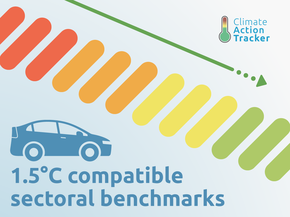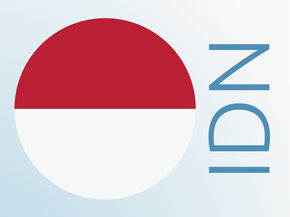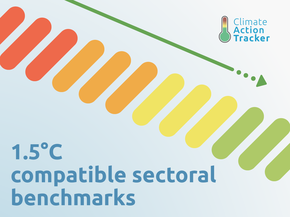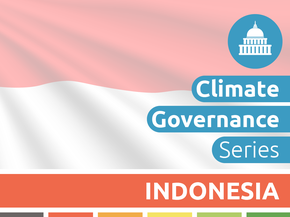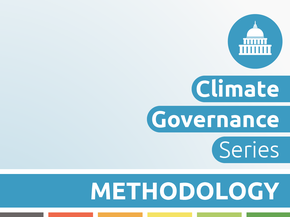Current Policy Projections
Economy-wide
In 2030, under the CAT current policies scenario, GHG emissions excl. LULUCF will increase to 1,491-1,522 MtCO2e/year, about six times 1990 levels, and 183% to 187% higher than 2014 emissions. With these projections, Indonesia overachieves its unconditional NDC and potentially even the 2030 targets as well (excl. forestry), despite strongly increasing emissions and not achieving other national targets, e.g. the National Energy Policy, or NDC reductions for LULUCF emissions.
Energy supply
The National Energy Policy (NEP), mentioned in the NDC, has a target to increase renewable energy to 23% of total primary energy supply (TPES) by 2025, from today’s share of 6.5% (MEMR Indonesia, 2017). However, renewables uptake has not been consistent with this target. The total new renewable investment in 2018 was about USD 1.6 billion, while investments in upstream fossil fuels reached USD 19.3 billion (Ministry of Energy and Mining Resources, 2019).
Indonesia’s biofuel blending target of 20% also applies to power plants running on oil and is among the most ambitious mandates globally (ICCT, 2016) and helps the country avoid foreign exchange costs. However, there are issues around the impact on deforestation since Indonesia’s palm oil crops for biofuels are exempt from compliance with Indonesian Sustainable Palm Oil (ISPO) certification scheme (ICCT, 2016) (see below under Transport, and Agriculture).
For power generation, geothermal power plants remain the biggest source of renewable power in Indonesia, reaching a total installed capacity of 1,950 MW at the end of 2018, followed by bioenergy generation with 1,850 MW.
Solar and small hydro reached together 330 MW and wind jumped to 75 MW with the opening of the country’s first wind farm (Sidrap) in 2018 (Hajramurni, 2018; Ministry of Energy and Mining Resources, 2019). The primary energy mix for power generation is still vastly dominated by fossil fuels with a share of almost 90% for coal, oil, and gas. 74 new contracts for renewable power plants were signed between 2017 and 2018, adding about 1.5 GW to the pipeline, but the new electricity plan indicates the installation of 12.2 GW of coal and gas power plants until 2020 (Republic of Indonesia, 2019).
This fossil fuel expansion is likely to bind the country to a carbon-intensive power sector for many decades. Other sources predict that coal will keep playing a major role in Indonesia’s energy mix in the foreseeable future (Asia Pacific Energy Research Centre, 2016). However, coal power expansion plans are increasingly under question, as energy demand seems to be growing at a slower pace (Republic of Indonesia, 2018c, 2019; The Jakata Post, 2018) and long-term contracts increase risk of locking-in costly capacity payments to thermal power plants while renewables become cheaper.
The agreements between the state electricity company (PLN) and power producers (IPPs) ensure a minimum payment for each kilowatt available–not necessarily dispatched. These values might reach up to 40% of the tariff value that the government needs to pay to IPPs during the duration of the whole contract and are estimated to lead to an obligation to pay over USD 16 billion for idle capacity until 2026 (IEEFA, 2017).
Under current policy projections the NEP targets will not be met: the assumed role of coal in our projections is even stronger than what it would be under the lock-in envisaged under the NEP. The Electricity Supply Business Plan (RUPTL) 2019–2028, published in 2019, defines a target of 56.2 GW of new capacity in the next decade (of which 35 GW will come online by the end of 2022). Planned coal capacities under the new 2019 electricity supply plan compared with 2018 went up from 26.8 to 27.1 GW and RE from 14.9 to 16.7 GW while gas went down from 14.3 to 12.4 GW. An installed capacity of 27 GW of coal-fired power plants will emit up to 200 MtCO2e/year (depending on capacity factor and efficiency). Unless the coal plants are decommissioned before the end of their lifetime, they will continue to emit this amount over the next 40 years.
These developments in energy policy represent an apparent mismatch in the context of energy policy. On the one hand, renewables are being supported to play a stronger role in the energy mix, for example, through policies that aim to foster the use of rooftop PV. This regulation establishes a net metering scheme in which the users are compensated for 65% of the electricity they put into the grid (Institute for Essential Services Reform, 2018). On the other hand, Indonesia has been locking in the large role of coal for the long-term. Investment decisions to build coal-fired power plants have been on a declining trend since 2014 in Southeast Asia, except for Indonesia (IEA, 2017). While achieving the targets of the NEP would result in emission reductions compared to current policy projections, it is to be noted that even under those targets the roles of especially coal, but also oil and gas, would remain locked-in across the coming decades, making a deep reduction of emissions extremely difficult and very costly.
Industry
Cement, ammonia-based fertilisers and metal industries are the largest emitting industry subsectors in Indonesia (Republic of Indonesia, 2018b). The Indonesian government is focussed on reducing cement industry emissions by lowering clinker-to-cement ratio (Republic of Indonesia, 2018a). Voluntary guidelines have been developed to encourage the use of blended cement by using clinker substitutes such as fly ash, and by using biomass and other alternative fuel and raw materials (AFR) in the cement production process. Indonesia also has various CDM projects in the industry sector, ranging from clinker replacement in the cement industry to oil field flaring reduction (UNFCCC, 2018). In addition, there are plans for energy audits and conservation for all energy intensive industries (Republic of Indonesia, 2018b).
The CAT has not quantified the impact of those policies separately. The Third National Communication shows minor reductions for the year 2020 in comparison to the emissions reductions in other sectors.
Transport
Biofuels
Indonesia’s biofuel blending mandate is one of the most ambitious in the world. Since 2016, the electricity sector must have 30% of the energy supplied by biofuels. Micro-business, fisheries, agriculture, transportation, industry and public service sectors, need at least a 20% share. The mandate has been continuously refined since its inception in 2006. In the same regulation, the target share values for all sectors are set to reach 30% by 2020 (ESDM, 2015; ICCT, 2016). While Indonesia’s biofuels targets are ambitious, they are not without controversy due to concerns with palm oil production (see Agriculture section).
Electric vehicles
The exact modalities of the government’s electric vehicle policy are still being developed; however, the government has included a strategic plan to develop charging infrastructure in their most recent electricity supply plan (Republic of Indonesia, 2019). Indonesia also wants to have 20% of all the vehicles it produces domestically to be low carbon by 2025 (Indonesia Investments, 2018).
Transport infrastructure & Public transit
Mitigation actions on transport infrastructure and planning in Indonesia are being guided by the Transportation Decree No. 201/2013 (Climate Policy Database, 2013) and include a major overhaul of the existing system with an "avoid, shift and improve" approach, including the construction of Bus Rapid Transit (BRT) corridors, implementation of traffic management technologies to reduce congestion, and construction of urban railway systems (Republic of Indonesia, 2018a).
The Sustainable Urban Transport Program (SUTRI) Nationally Appropriate Mitigation Action (NAMA) is being implemented in seven pilot cities and will be a key instrument to support transformation in the transport sector. The NAMA aims to improve public transport and implement transport demand management measures, e.g. road pricing and public bicycle schemes (Ministry of Transportation, 2014).
In March, the first line of Jakarta’s Mass Rapid Transit system opened. The project was supported by Japanese financing. A second line is expected to be completed by 2024. A key challenge now is securing the modal shift in commuter habits. The transit system is currently only used by 20% of commuters.
Buildings
The growing middle-class demands for infrastructure means a continued relevance of the building sector in Indonesia. To mitigate the impacts of growing demand, the Indonesian government has set targets to reduce total final energy consumption in the buildings sector (both commercial and housing) by 15% (ASEAN Centre for Energy & GIZ, 2018).
Regulation 36/2005 under Law No. 28/2002 sets energy standards for buildings (SNI) concerning building envelop, air conditioning, lighting appliances, and energy audit procedure (GBPN, 2013). Also, Energy Performance Certificates are mandated for building users whose energy consumption is beyond 6,000 toe/year. These users are required conduct an energy audit and implement its recommendation, and report result of the implementation energy measures to the government. Indonesia also has a mandatory labelling for lighting ballasts (since 2011), MEPS and mandatory labelling for air conditioning (since 2016) that are also under development for refrigeration, cooking, washing machines, dishwashers and motors (CLASP, 2018; IEA, 2016). In addition, municipal actors have been active in promoting green building concepts. In 2012, Jakarta passed a mandatory Green Building regulation. Compliance with energy conservation and efficiency regulations for large buildings that is reinforced through the issuance of building permits and the shutdown of buildings that do not comply with the established criteria (ASEAN Centre for Energy & GIZ, 2018).
Agriculture
The demand for biofuels will have impacts for the agricultural and land use sector, as this demand may be met by expanding domestic palm oil industries. We have only quantified the impact the biofuels mandate would have in the transport and industry sectors under our current policy projection, but have included the lifecycle when assessing emissions reduction impact (see Assumptions).
While oil palm plantations in Indonesia are required to be ISPO-certified (Indonesian Sustainable Palm Oil), plantations for biofuel production are specifically exempt from this. As the total area of palm oil plantations in Indonesia has risen more than tenfold in the period 1990–2015 (US Department of Agriculture, 2016), while forest cover declined by about 20% (World Bank, 2015), production of biofuels from palm oil is “predicated on a vision of biofuel expansion that would require extensive deforestation”(ICCT, 2016).
Options to prevent this could require incentivising the creation of new palm oil plantations only on degraded lands, or support biofuel production from oil palm residues (ICCT, 2016). In 2018, the government established a three-year moratorium on new licenses for oil palm plantations (Mongabay, 2018); the moratorium is considered to be beneficial in limiting future deforestation in Indonesia (Mosnier et al., 2017).
As of January 2019, suppliers involved in deforestation are suspended from sourcing from Wilmar International, the third biggest palm oil trader in the world (Wilmar International, 2018). This brings pressure on the government and industry to create more sustainable supply chains in Indonesia. Also, in 2018, Indonesia implemented a policy that mandates all state crops to maintain sustainable practices including banning the use of fire for land clearing (Republic of Indonesia, 2018a). The government allocates its highest agriculture mitigation target to developing palm plantation area on non-forested land/abandoned land/ degraded land/other use areas, but the exact approach to achieving this is neither well-explained nor easily traceable (Republic of Indonesia, 2018b).
Forestry
Indonesia alone contributed to 7% of the total global tree cover loss between 2001 and 2017 (Global Forest Watch, 2018) and contributes to a large share of LULUCF emissions reaching around 1 GtCO2e/year, considering deforestation, forest degradation, peat decomposition, and peat fires (Alisjahbana & Busch, 2017; UNFCCC, 2015). Due to an unusually high occurrence of peat fires, the emissions from the LULUCF sector in Indonesia reached 1.6 GtCO2 in 2015. To put that context, global emissions from LULUCF were about 4.1 GtCO2e in 2016. Assessing a LULUCF emissions trajectory is somewhat complicated by the fact that these emissions have shown large fluctuations due, among other things, to the variability of emissions from peat fires to external factors such as the influence by El Niño.
In 2017, 0.8% of Indonesia’s forests were lost compared to 1.5% in 2016 - a 1.12 Mha reduction in deforestation. While this is a good sign, the biggest driver for deforestation is still commodity-driven deforestation, which resulted in around 1.5 Mha of tree cover loss in 2015 (Global Forest Watch, 2018).
We made separate analyses of Indonesia’s LULUCF emissions in our 2015 and 2016 assessments. LULUCF emissions are a huge uncertainty factor in assessing the extent to which Indonesia is in line with meeting its NDC. The CAT does not assess the LULUCF component of the NDC; however, both conditional and unconditional targets depend heavily on the Forestry sector. It compromises about 60% of the emissions reduction effort. Emissions from this sector are projected to increase by at least 300 MtCO2e between 2020 and 2030 (Kuramochi et al., 2017), which takes Indonesia even further from reaching its sector NDC targets which, if they were to be met, require a decrease in LULUCF emissions. If the sector is taken into account, more ambitious actions would be needed to reach the NDC targets considering both the reinforcement and expansion of the current forestry moratorium (Wijaya et al., 2017).
As part of the National Action Plan for Greenhouse Gas Emission Reduction (RAN-GRK), Indonesia identified actions in the forestry sector. Those are sustainable peat land management, reducing the deforestation and land degradation rate, and developing carbon sequestration projects in forestry and agriculture (Mersmann et al., 2017). These efforts are reinforced through the REDD+ Task Force, which in the short and medium term focuses on improving governance of forests, and in the long term aims at turning Indonesia’s forests and lands into a net carbon sink (ibid). In the Third National Communication, Indonesia describes 13 “core mitigation plans” that have been pursued since 2010, each with a quantitative emission reduction target attributed to them. All targets add up to reductions of 810 MtCO2e/year. CAT does not quantify the expected impact itself.
Laws in place to regulate the sector are the moratorium from 2015 for new permits and improvement of forest and peatland governance and the National Strategy for Forest Law Enforcement in Indonesia from 2005, a programme to combat illegal logging. A three-year moratorium on new licenses for oil palm plantations constitutes a freeze on the entire licensing process for oil palm plantations in Indonesia. The policy constitutes not just a freeze on new licenses, but an order for the relevant central government ministries and regional governments to conduct a massive review of oil palm licensing data. Indonesia is also pursuing the One Map Policy, with the objective to create a transparent monitoring system of forest areas (Mulyani & Jepson, 2016).
Further analysis
Country-related publications
Stay informed
Subscribe to our newsletter

